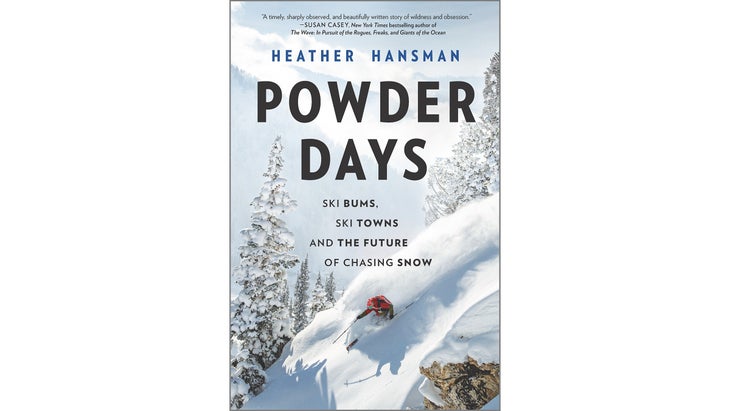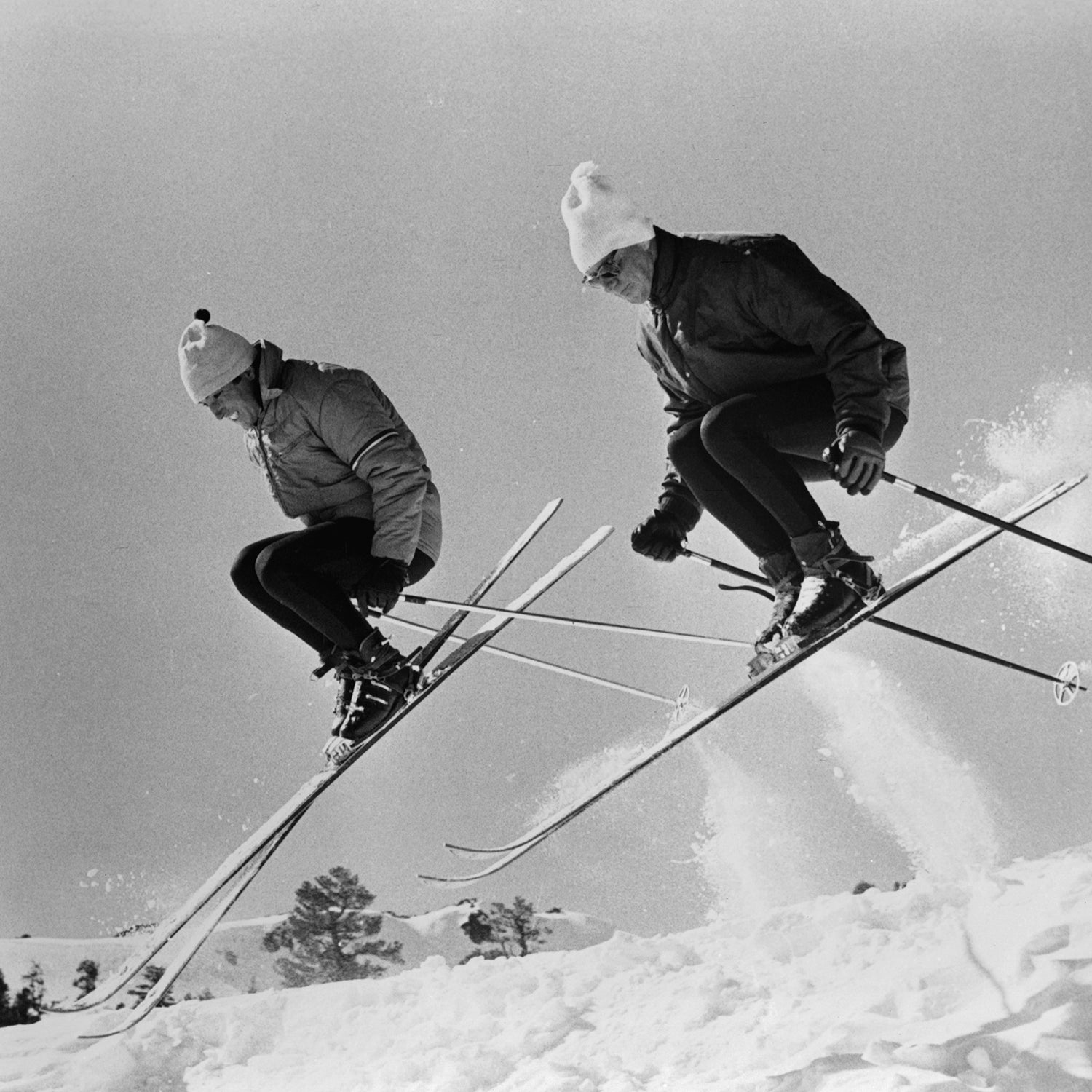Powder Days is the November pick for the ���ϳԹ��� Book Club. You can learn more about the book club here, or join us on to discuss the book.
A few months ago, an acquaintance who follows me on social media asked, “Are you independently wealthy? I mean, you do a lot of skiing.”
I’m not, but his assumption was fair—skiing is more expensive than ever and increasingly inaccessible to all but the wealthy. It would take a long time to explain how my husband and I managed to forge a life that revolves around skiing for us and our three kids, including becoming ski bums in our early twenties, clinging to those selves as we built a family, and finding ways to work in the ski industry during that time, thereby gaming the system in our own little ways to get the cheapest season passes and gear possible. Now it turns out I can skip that explanation, thanks to Heather Hansman’s superbly reported and lyrical new book , which looks at how difficult it’s become for mountain-town locals and devoted dirtbags to find a way to keep skiing.
Powder Days is part anatomy of a “skid” (Jackson, Wyoming, slang for a ski bum), part examination of the changing culture and economics of the ski industry, and part ode to a lifestyle that Hansman once had but left and may never again be able to recover. Hansman is an accomplished writer and environmental columnist for ���ϳԹ���, and her first book, , hangs on a solo pack-raft trip she made on Utah’s Green River; in its pages she waxes poetic about the beauty surrounding her and reports on water issues that vex the West. Powder Days adheres to the same format, only Hansman’s voice shines more here, an indication of how fully she is in her element. A lifelong skier, she grew up digging her edges into blue-ice runs on the tiny, East Coast mom-and-pop hills her parents could afford to take her to. She kept skiing through high school, and in college, she’d wake up “in the post-party, predawn dark to drive across Maine and New Hampshire just to ski knobby backcountry lines in the White Mountains.”

After college, skiing brought her west, following a conversation around a campfire in Maine, where her “future boss” told her he could get jobs for her and her friend Katie in Colorado. The women were good skiers, and wily, and for several years during Hansman’s twenties, her sole focus was skiing, which she supported by working a series of different jobs (from liftie to guest services to patroller) at Colorado’s Beaver Creek Resort. It was the kind of life that ski films by Matchstick Productions and Teton Gravity Research used to herald: work, party, scrape by, and ski as much as possible. But along the way, Hansman grew weary of the scraping-by part and scared she’d “wake up at fifty, still grumpily scanning lift tickets and bemoaning the lack of snow.” She became an editor at Ski magazine, a job that set her up perfectly to both ski more and learn the inner workings of the ski industry. A few years later, however, she left Ski and moved to a city.
That’s when her life choices began to torment her, and the crux of the book comes into view. For 250 pages, she toggles between examining the existential dread she feels over never becoming the kind of skier who embodies “the soul of skiing”—that raw, slightly stinky, always hungry, but most dedicated skier in the sport’s societal strata—and all of the forces that threaten the survival of the ski bum. These diehards have all shunned the trappings of the middle class—from benefits to college educations to homeownership—in favor of doing whatever it takes to spend every winter day chasing something currently at great risk: snow, preferably powder. Finally, burdened by the fear that she gave up too much when she pivoted her life away from skiing, Hansman takes to the road to see if she did turn right when she should have stayed left.
Ultimately, you see that the heart of skiing’s myth is barely beating, and where it is, its remaining open arteries are quickly stiffening.
As she makes her way from Vermont to Colorado, and from Montana to West Virginia, we meet people who took the path she didn’t. Each one, to a fault, is lovestruck by snow, deeply introspective about their life choices, and a ripper. Yet each is plagued by forces in both the world at large and the ski industry that threaten their precarious existence. Hansman lingers on them long enough for us to understand their reasons for shunning a more comfortable life in favor of skiing 150 days a year.
But the real importance of this book is apparent in the difficult-to-read yet clear-eyed reporting on the ski industry. Hansman’s gaze is unflinching as she calls out the white and wealthy niche market the industry caters to (more than half of resort skiers earn annual incomes of over $100,000, and 87 percent of them are white) and the housing crisis hurting ski towns (, for instance, showed that the gap between what an average household could afford and the median price of a home there could grow by up to 400 percent in the next decade). She looks at the high rate of alcoholism, addiction, and suicide in such towns—Hansman reports that Aspen alone “has three times the national average of completed suicides”—and the accelerating climate crisis that many ski companies simultaneously contribute to but are trying to battle. Ultimately, you see that the heart of skiing’s myth, which dates back to Warren Miller sleeping in the parking lot of Sun Valley, Idaho, is barely beating, and where it is, its remaining open arteries are quickly stiffening.
It’s all so stark and depressing that toward the end of Powder Days, I wondered if it was even possible for Hansman to find something for us to be hopeful about. In the end, she does and she doesn’t. To find out, you’ll have to read this beautiful, aching, and honest portrayal of a skier wistfully longing for something she gave up and an industry that seems to be devouring its own soul. You’ll find some heroes hanging on to the reason so many of us started skiing in the first place, and a few pockets that are still managing to preserve the magic.


